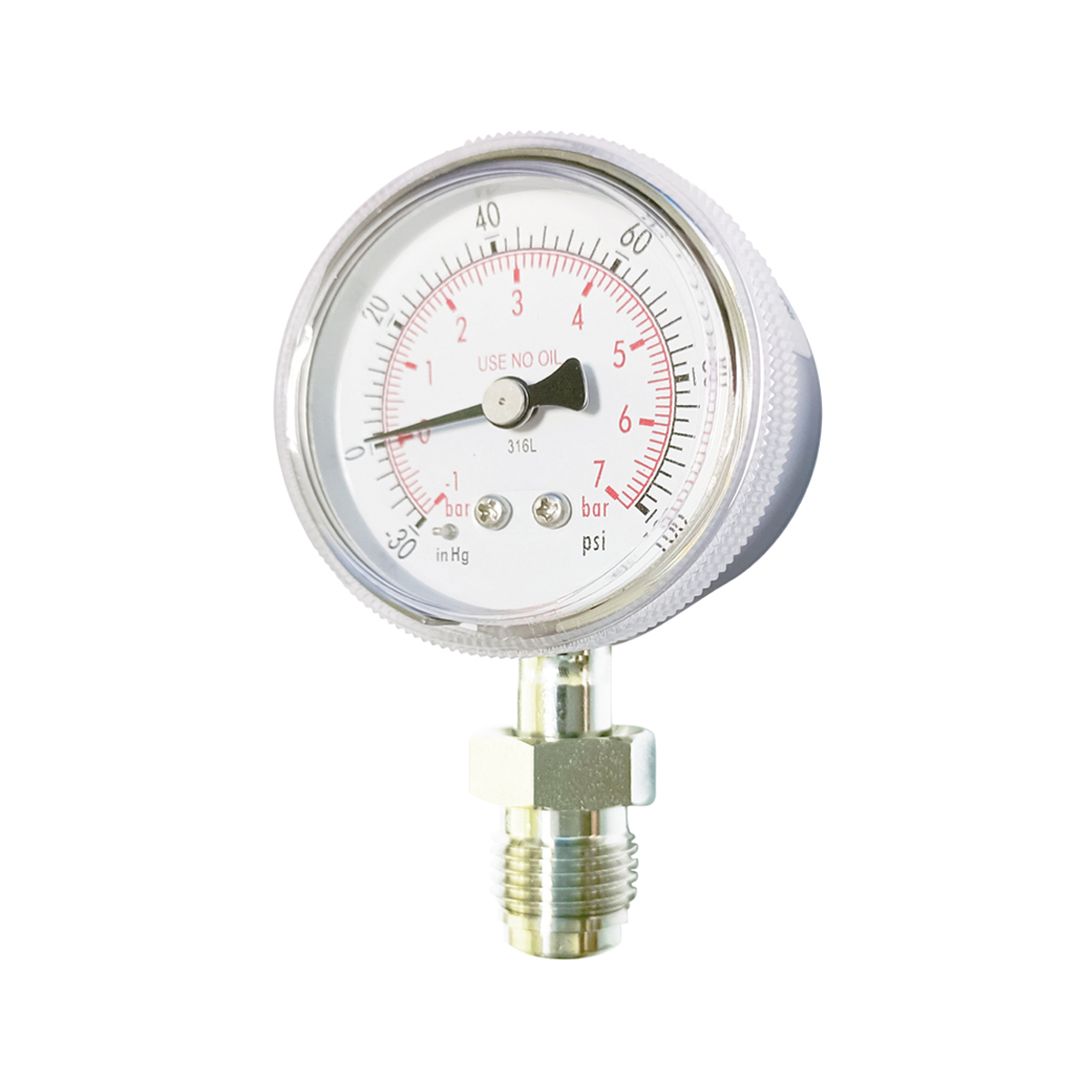
Nov . 04, 2024 01:44 Back to list
mechanical differential pressure gauge jah
Understanding Mechanical Differential Pressure Gauges
Mechanical differential pressure gauges are essential instruments used in various industrial applications to measure the difference in pressure between two points within a system. This type of gauge operates on fundamental principles of physics and is crucial for monitoring processes, ensuring efficiency, and maintaining safety in various environments.
At its core, a mechanical differential pressure gauge consists of a sensing element, typically a diaphragm or a tube, that responds to the pressure difference between its two sides. One side of the sensing element is connected to the high-pressure point, while the other is connected to the low-pressure point. When there is a difference in pressure, the diaphragm or tube deflects, and this deflection is translated into a readable measurement on the gauge's dial.
One of the key advantages of mechanical differential pressure gauges is their simplicity and reliability. They do not require electrical power to operate, making them suitable for use in hazardous environments where electric components might pose a risk. Additionally, these gauges are known for their durability and can withstand harsh conditions, including extreme temperatures and vibrations, which are common in industrial settings.
In terms of applications, mechanical differential pressure gauges are used in various sectors, including HVAC (heating, ventilation, and air conditioning), water treatment plants, and oil and gas industries. In HVAC systems, they help monitor airflow and assess filter performance, ensuring that the systems operate efficiently. In water treatment facilities, these gauges track pressure drops across filters, enabling timely maintenance and preventing system failures. In the oil and gas sector, they are crucial for monitoring pipeline pressures and ensuring safe operations.
mechanical differential pressure gauge jah

When selecting a mechanical differential pressure gauge, several factors should be considered. The pressure range, accuracy, and the materials used in manufacturing the gauge are all vital components that determine its suitability for a specific application. Common materials for diaphragms include stainless steel and elastomers, which provide excellent chemical resistance and durability.
Calibration is also a critical aspect of maintaining the accuracy of these gauges. Regular calibration ensures that the measurements are precise and reliable. Some manufacturers provide calibration services, while others allow users to perform calibration on-site, depending on the design of the gauge.
While mechanical differential pressure gauges offer numerous benefits, they do have limitations. For instance, they may not be as precise as electronic gauges for high-accuracy measurements. However, for many applications where a simple, robust solution is needed, mechanical gauges are often the preferred choice.
In conclusion, mechanical differential pressure gauges play a vital role in ensuring the smooth operation of various industrial processes. Their straightforward design, reliability, and ability to function without electrical power make them indispensable in many fields. Understanding their functionality and applications can help businesses make informed decisions about pressure monitoring and management in their operations, ultimately leading to improved efficiency and safety.
-
High-Precision 5 Valve Manifold Differential Pressure Gauge Suppliers
NewsApr.29,2025
-
High-Precision Diaphragm Vacuum Pressure Gauges Manufacturers & Quotes
NewsApr.29,2025
-
Omega Differential Pressure Gauges High Accuracy & Durability
NewsApr.28,2025
-
Low Pressure Differential Pressure Gauges Precision Solutions & Quotes
NewsApr.28,2025
-
Digital Diaphragm Pressure Gaauge Precision Measurement & OEM Quotes
NewsApr.28,2025
-
Differential Pressure Gauge China Price High-Accuracy & Best Quotes
NewsApr.28,2025
